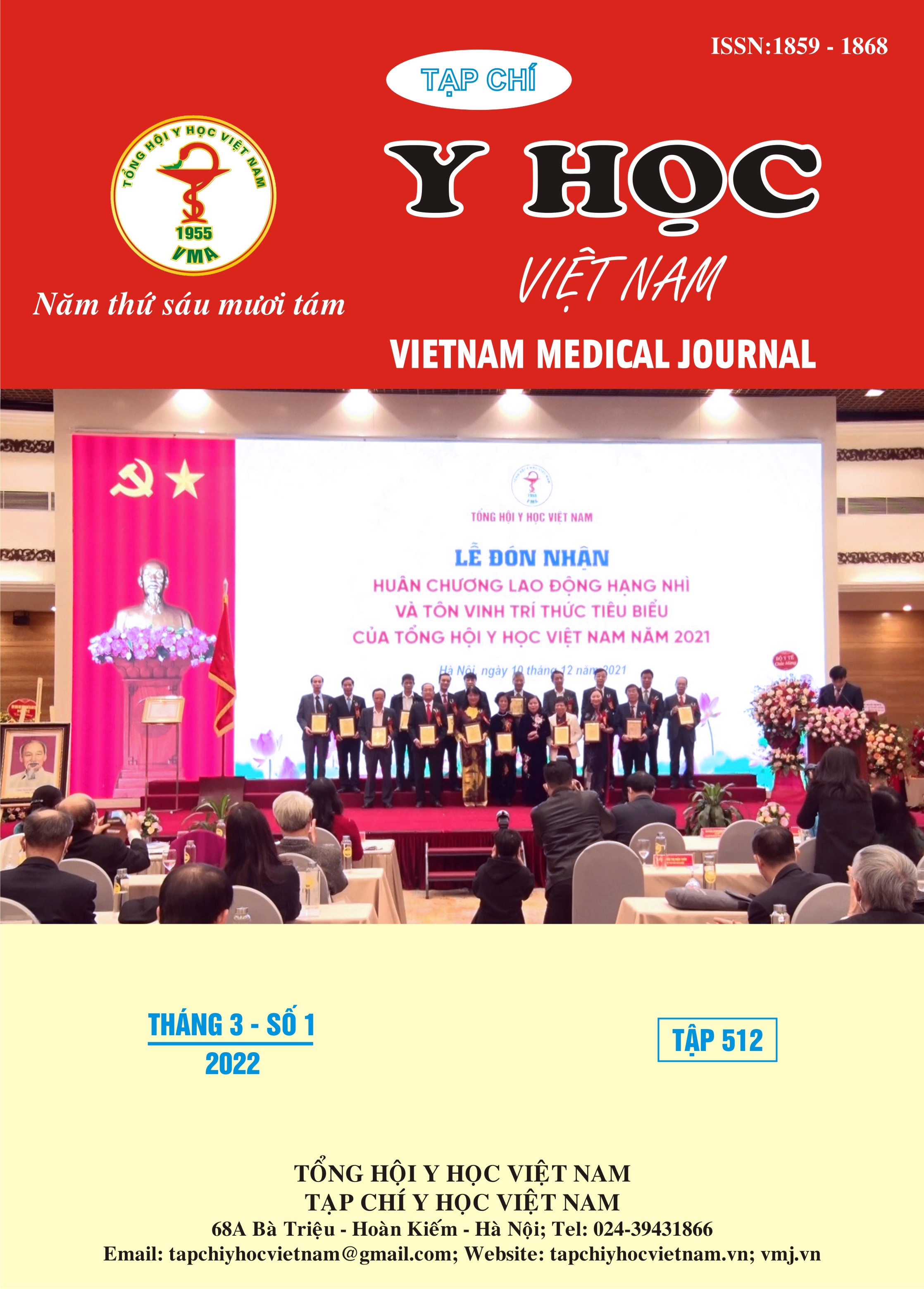SURGICAL TREATMENT RESULTS OF EPIDERMOID CYSTS IN THE CEREBELLOPONTINE ANGLE
Main Article Content
Abstract
Objectives: To evaluate clinical features, imaging and factors related to surgical treatment results of epidermoid cysts in the cerebellopontine angle. Methods: A cross-sectional descriptive study of 34 cases of CPA epidermoid cysts diagnosed and treated with microsurgery at the Neurosurgery Department - Cho Ray Hospital from February 2018 to February 2021. Results: The mean age of the research group was 41,1 ± 8,7, male/female ratio is approximately 0,4/1. The most common hospital admission symptoms were headache (29,4%), V neuralgia (26,5%) and tinnitus (20,6%). Total tumor removal reached 41,2%. After 6 months of postoperative follow – up, the most improved symptoms were hemiparesis (100%), facial hemispasm (75%) and V neuralgia (72,2%). New neurological deficits at 6 months were 14,7%, of which cerebellar syndrome accounted for 5,9%, paralysis of the VI, VII and VIII nerves each equivalent to 2,9%. Complications after surgery were all less than 10%, cerebellar contusion and hemorrhage accounted for the highest rate of 8,8%. Conclusion: CPA epidermoid cysts with diverse clinical manifestations. Microsurgery to remove the entire tumor is the ideal treatment to increase the rate of symptom improvement. However, if tumors are adherent to surrounding important structures, surgeon can actively leave this part in order to preserve function after surgery.
Article Details
Keywords
epidermoid cysts, cerebellopotine angle
References
2. Czernicki T, Kunert P, Nowak A, Wojciechowski J, et al (2016), "Epidermoid cysts of the cerebellopontine angle: Clinical features and treatment outcomes", Neurol Neurochir Pol, 50 (2), pp. 75-82.
3. Farhoud A, Khedr W, Aboul-Enein H (2018), "Surgical Resection of Cerebellopontine Epidermoid Cysts: Limitations and Outcome", Journal of neurological surgery Part B, Skull base, 79 (2), pp. 167-172.
4. Kato K, Ujiie H, Higa T, Hayashi M, et al (2010), "Clinical presentation of intracranial epidermoids: a surgical series of 20 initial and four recurred cases", Asian journal of neurosurgery, 5 (1), pp. 32-40.
5. Kobata H, Kondo A, Iwasaki K (2002), "Cerebellopontine angle epidermoids presenting with cranial nerve hyperactive dysfunction: pathogenesis and long-term surgical results in 30 patients", Neurosurgery, 50 (2), pp. 276-285; discussion 285-276.
6. Liu P, Saida Y, Yoshioka H, Itai Y (2003), "MR imaging of epidermoids at the cerebellopontine angle", Magn Reson Med Sci, 2 (3), pp. 109-115.
7. Revuelta-Gutiérrez R, Díaz-Romero Paz R F, Vales-Hidalgo L O, Hinojosa-González R, et al (2009), "Cerebellopontine angle epidermoid cysts. Experience of 43 cases with long-term follow-up", Cir Cir, 77 (4), pp. 257-265; 241-258.
8. Singh R, Prasad R S, Singh A (2020), "Evaluation of Cerebellopontine Angle Epidermoid Presenting with Cranial Nerve Deficit: A Surgical Perspective", Asian J Neurosurg, 15 (3), pp. 573-578.
9. Yoneoka Y, Seki Y, Akiyama K, Sakurai Y, et al (2021), Prolonged Postoperative Pyrexia and Transient Nonnephrogenic Vasopressin-Analogue-Resistant Polyuria following Endoscopic Transsphenoidal Resection of an Infundibular Epidermoid Cyst, Hindawi, pp. 6690372.


